***This article originally appeared in the August ’22 issue of Animation Magazine (No. 322) ***
Jared Stern was volunteering a while back in a pet shelter when he noticed older animals that were less likely to be adopted were kept in the back room.

“It was sad to me, and they seemed so powerless,” says Stern, a writer/producer whose credits include Warner Bros.’ LEGO animation franchise, the movies Storks and Smallfoot and the acclaimed Netflix Green Eggs and Ham series, as well as the creator of the live-action comedy series Dr. Ken. “I don’t know why — maybe because I’d been watching a lot of superhero movies — I was just like, what if those pets got superpowers?”
Thus was born a pitch that comes to fruition with the theatrical release of the animated feature DC League of Super-Pets, in which Superman’s beloved dog Krypto and a ragtag group of shelter pets with superpowers save the Justice League — and the world — from a hairless guinea pig from outer space.
The movie features an all-star voice cast, with Dwayne Johnson playing Krypto, his Jumanji co-star Kevin Hart as a hound named Ace, SNL superstar Kate McKinnon as the alien Lulu, Russian Doll’s Natasha Lyonne as a super-fast turtle named Merton, Diego Luna as the super-powered squirrel Chip and Vanessa Bayer as a pot-bellied pig who goes by PB. The movie also features John Krasinski as Superman, Keanu Reeves as Batman, Marc Maron as Lex Luthor and Olivia Wilde as Lois Lane.
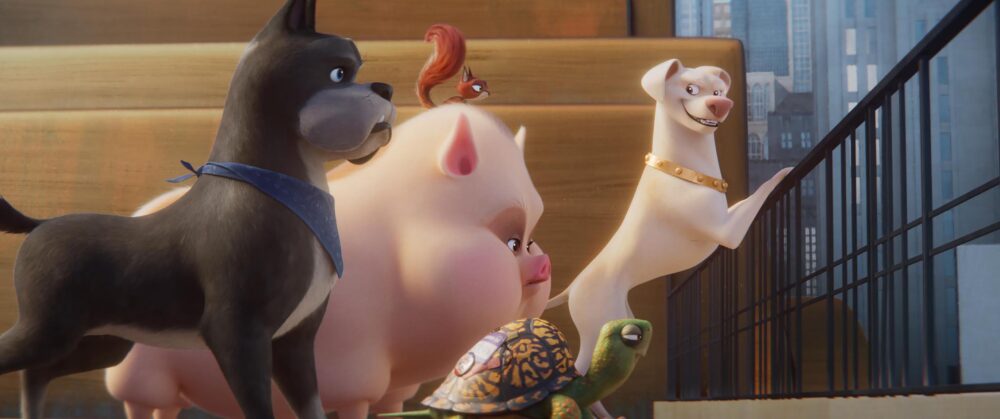
Wagging the Origins Tale
The screenplay is by Stern and John Whittington. Stern also directs, with Penn Zero: Part-Time Hero creator Sam J. Levine as co-director, and the movie is animated by Animal Logic. Stern describes the movie as an origin story for the super-pets that balances both comedy and adventure. “We wanted it to have a lot of fun, but also to be a great action comic-book movie, and also to make you care, and to tell a really good emotional story,” he says.
The star of the show is Krypto — Superman’s white-coated, red-caped pup — who has been a part of DC Comics lore since 1955. And while he’s appeared in many comics and animated adaptations, he was still a bit of a blank slate. “He doesn’t have a definitive version that everybody knows,” says Levine. “So it just felt like an exciting opportunity.”
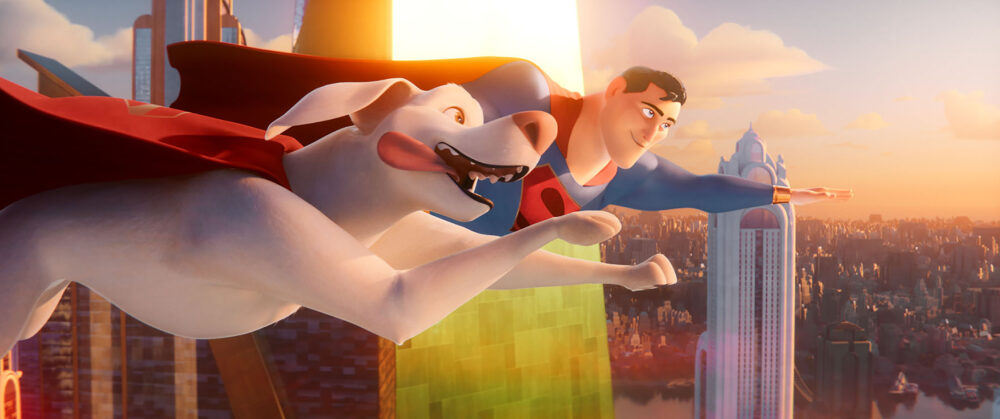
The duo of Johnson and Hart, whose shelter pup eventually joins the Batman family, brings a lot of comedy firepower and personality to the movie. Johnson, arguably the world’s top action star, has an ability to play both emotion and comedy that made him the right fit for the character and his journey in the film. Hart’s rapid-paced comedy and instantly recognizable voice serves as an ideal foil.
“At the heart this movie is about what it’s like, what it means to be a dog … a good friend,” Levine says. ”[Johnson] really tackles those areas — and Kevin Hart does the same.”

In addition to vintage comics, the movie’s look was inspired by Art Deco architecture and the work of magazine cover artist J.C. Leyendecker. Visible brushstrokes and “chunky heroic shapes” had a major influence on the look of the environments and characters, bringing a texture and warmth to the movie. “I’m so excited about the trend of the way CG is moving, where it can be more graphic,” Stern says.
Finding space in a 100-minute movie for all those characters required a lot of iteration, Stern says. “That was one of the trickiest things,” he says. “It was just refining to find the right balance, and you could tell when it got there that it felt right.”

Animation supervisor Dave Burgess says his team at Animal Logic was leaning into a graphic look inspired by the comics. “We really wanted pretty much every frame to be one you could freeze frame on, and it would look right and appealing and well-designed,” he says. “I think once everybody kind of embraced that — it maybe took a little bit longer to do, but I think ultimately it really did make the animation look kind of gorgeous.”
Stern credits character designers Mayumi Nose and Matt Williamês with finding the right balance between a caricatured look and heroism. “We looked at some of the Alex Toth designs for the Super-Friends [TV series] or the Curt Swan Superman [comics] from the Silver Age, but we also tried to make sure it feels like our animated characters are heroes and also funny,” says Stern. “Our Superman has some comedy to him, in a way that fits into I think what we all love about Superman.”
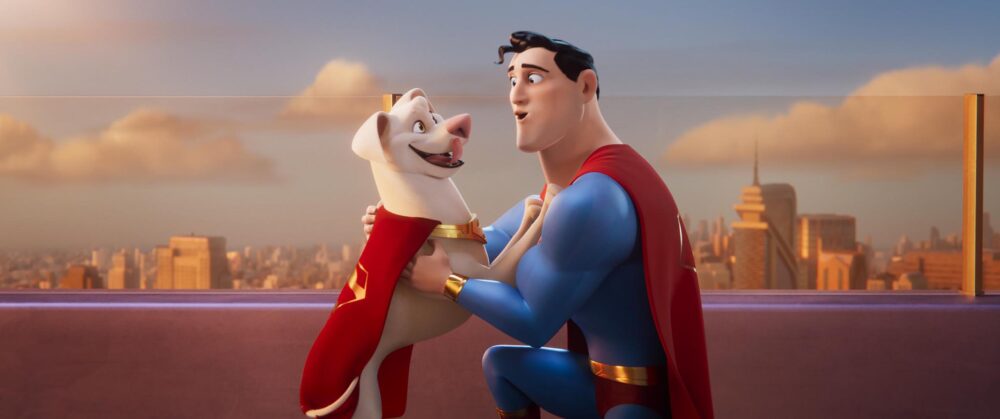
Once the characters were designed, Burgess says he and Williamês tried to figure out how to make each one look as appealing as possible in every frame. “Appeal is really one of those core tenets of animation, and it’s kind of very subjective and nebulous,” he says. “To me, appeal is that intangible that makes you want to just grab the character, pull it out of the screen and hug it. So we really were trying to get as much of that into our designs and performances as we possibly could.”
Animating human characters is hard enough, but it can be at least as difficult to animate animals — especially common ones like dogs, whose well-known behaviors can’t be faked. To get used to animating animals, Burgess says he gave his crew a ramp-up exercise of finding a video clip of a dog doing something athletic and matching it in animation. “An audience knows how a dog moves. They know how a cat moves. They know how a squirrel moves, to some degree,” he says. “Even if it’s on a subconscious level, we really have to make sure that it looks right.”
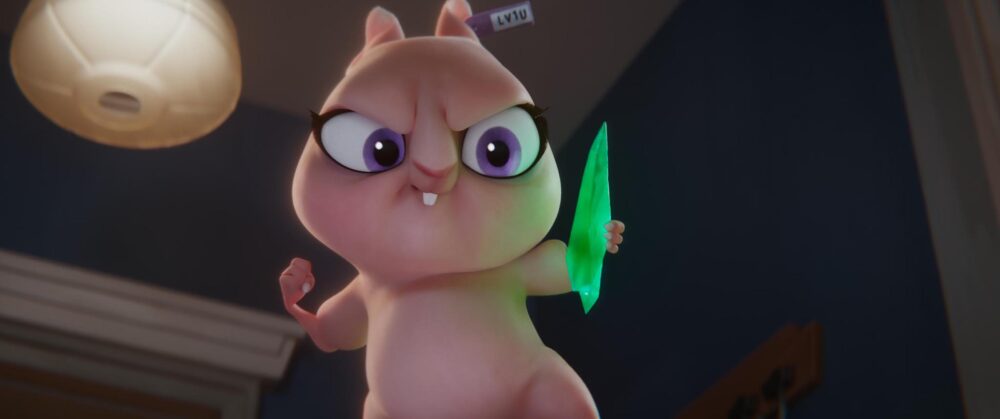
There were other basic animation problems to solve when dealing with superheroes, including how to animate capes and making the audience believe these characters could fly. “They can’t just hover in the air,” Levine says. “They [need to] have some weight and some logic to how they’re moving in the sky.” That had to be balanced with the need for caricature and to help create emotion. “You can also go too far, and then you’re stuck with just realism,” Levine says. “The realism works for motion, and every now and then you break it for comedy.”
”We can get humor out of silent moments, as well as humor out of the written gags and the written dialogue,” Burgess says. ”[We were] trying to find places where we could get looks between characters or little beats of extra time for an eye roll or something like that. I think that added a lot to who the characters were, and it made the animation I think funnier.”
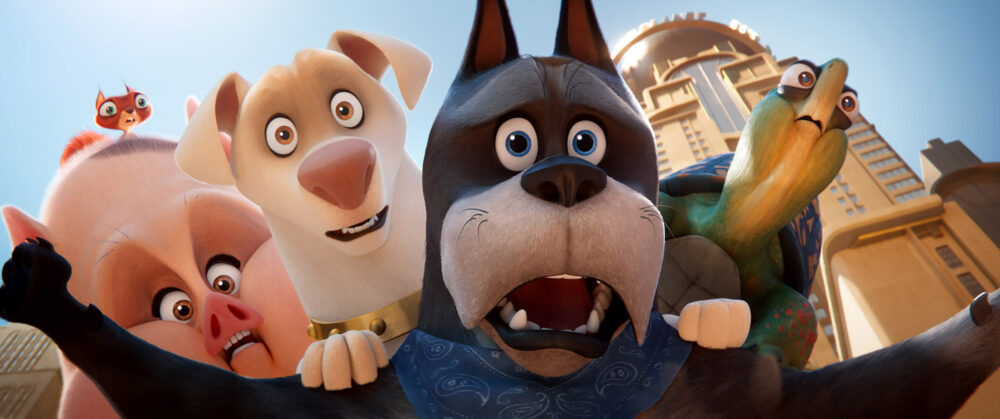
The style of Super-Pets was new for Animal Logic, which previously animated features as diverse as the LEGO features, Peter Rabbit and Legend of the Guardians: The Owls of Ga’Hoole, Burgess says. ”In the LEGO movies, we absolutely, totally respected the limitations of what a mini-figure could do, so that meant the scale nodes were all locked, and there was no way you could scale or stretch anything,” he says. ”So on Super-Pets, we wanted to kind of open that box and give that tool back to the animators.”
The crew topped out at about 70 animators, most of which were based in Vancouver with Animal Logic’s Sydney division pitching in for a while. Animators worked on the film for about two years, and had some extra time on the project after the original release date was pushed back a year due to the COVID-19 pandemic. “We got, I think, an extra three or four months tacked on to the end,” Burgess says.
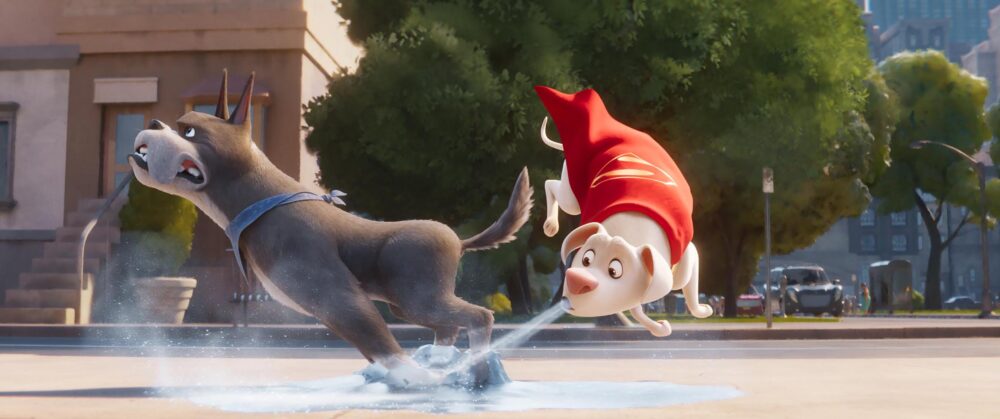
Room for Fresh Ideas
The movie was done with a sequence-based workflow, with Burgess “casting” the movie by deciding which animators get which shots. He also prefers giving animators longer sequences, allowing them to take ownership over a chunk of the film instead of random scenes scattered throughout.
“It helps break up a little bit of the tunnel vision that can happen in animation,” Burgess says. “If you have one single shot, it’s easy to really go down the rabbit hole on the shot and to lose a bit of perspective, because you get so obsessed with making your shot beautiful and perfect and the best animation ever. Whereas if you have five shots, you know that there’s a rhythm to each shot, and it flows from one to the next to the next.”
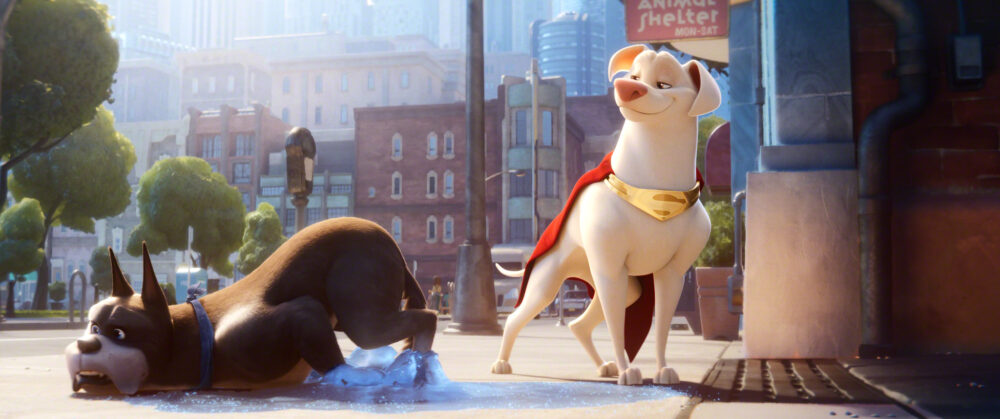
That also helps the animators feel more creatively engaged in the movie, Burgess says. “Even though we had really, really great storyboards and we had really wonderful layout, I still think that there’s room in the animation process to add new ideas and to bring new stuff to the table,” he says. “And the directors were always really delighted when we did that.”
Warner Bros.’ DC League of Super-Pets opens in theaters internationally on Weds., July 27 and in North America on Fri., July 29.





 Win a Funko X Lilo & Stitch Prize Pack!
Win a Funko X Lilo & Stitch Prize Pack! 